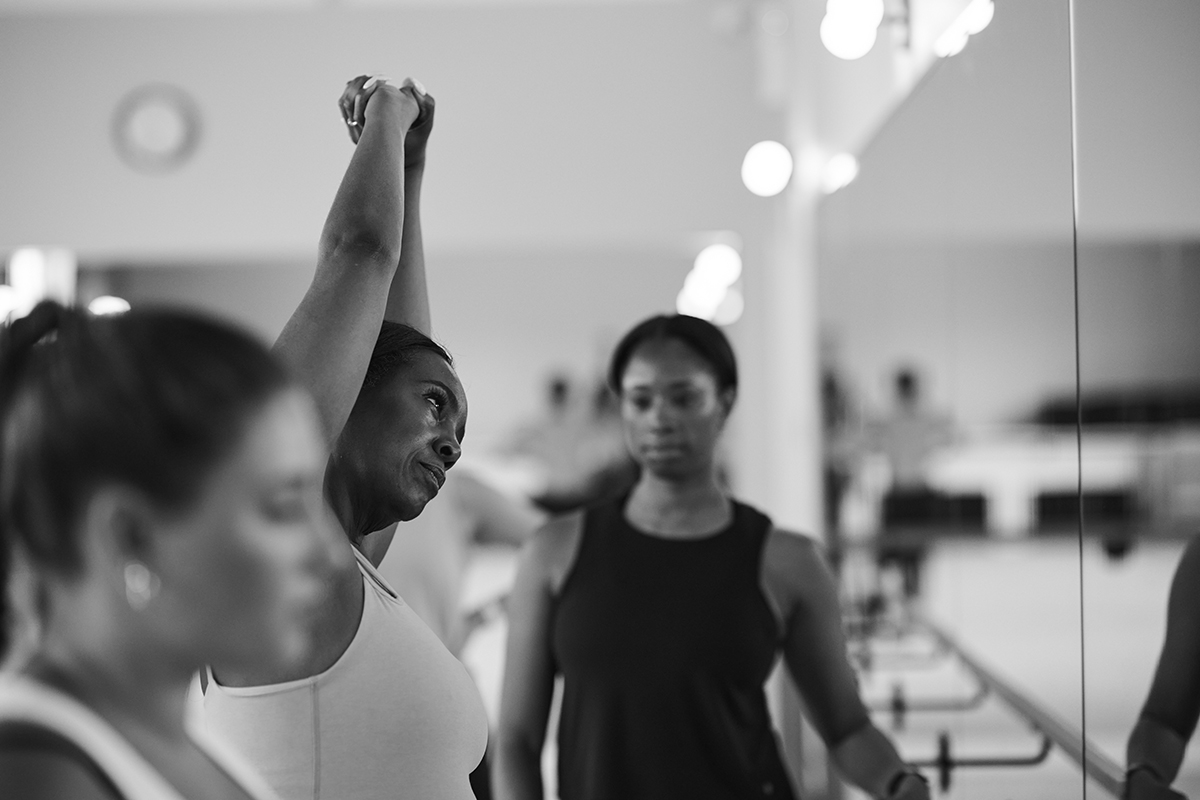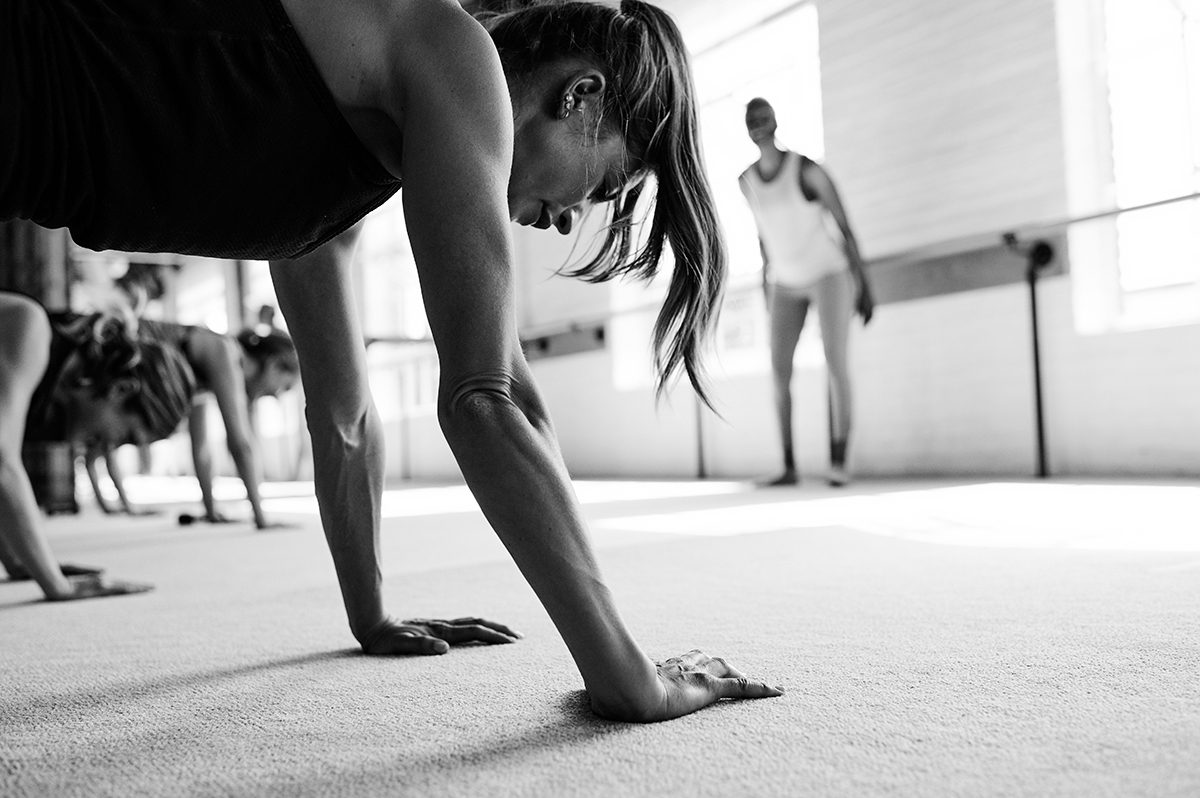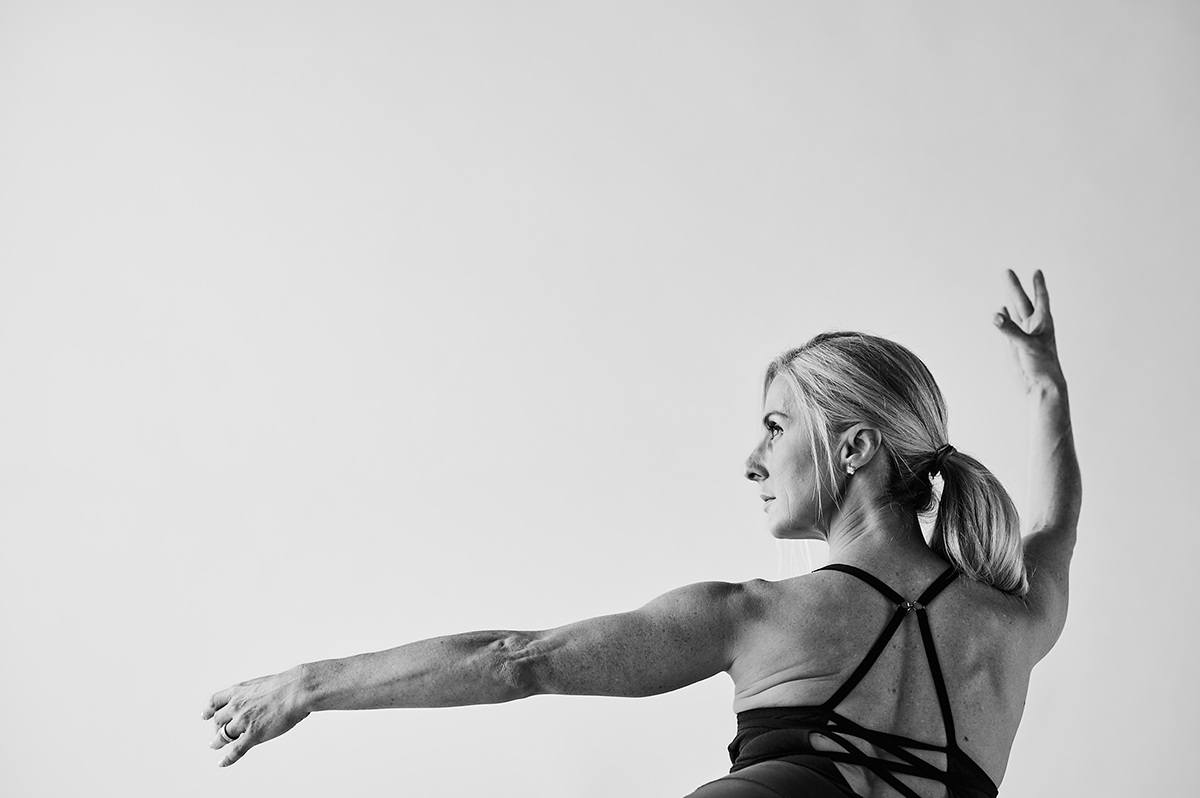New clients! For a limited time, Get 13 Classes for $78 (only $6 per class)
Three Body Changing Active Stretches That You Can Do at Home
Last month, I described active stretching and other stretch techniques that dancers and athletes use to develop their amazing bodies. You stretch actively when you hold a stretch position in place by using the muscles on the opposite side of your body rather than with a strap, your hand, or some other “passive” force. Now, I’d like to share with you a great active stretching sequence from the Bar Method workout. These exercises sculpt and elongate your muscles at the same time, so they’re give you results beyond what you’d get with intense exercise alone.
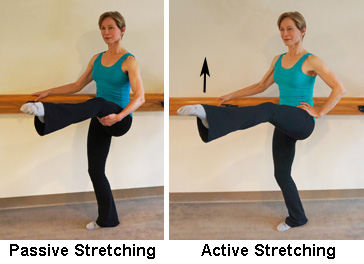 1. Begin with “Leg Lifts.” For most people, kicking one leg upwards is not especially challenging. In this exercise you’ll be drawing it up and keeping it up there, an altogether different endeavor! Our legs don’t do this normally, so leg lifts generate immediate intensity while they elongate the muscles in the backs of your legs with active stretching. Follow these steps to do leg lifts at home:
1. Begin with “Leg Lifts.” For most people, kicking one leg upwards is not especially challenging. In this exercise you’ll be drawing it up and keeping it up there, an altogether different endeavor! Our legs don’t do this normally, so leg lifts generate immediate intensity while they elongate the muscles in the backs of your legs with active stretching. Follow these steps to do leg lifts at home:
- Stand next to a stable piece of furniture that’s about hip or waist height, hold onto it with one hand.
- Place the foot that’s opposite your stable support on the floor in front of you.
- Slightly bend both of your knees.
- Hold onto to the back of your thigh with your free hand, and draw your leg upwards as high as you can.
- Pull in your abs and lift your chest.
- Hold your leg where it, let go of your leg, and place your hand on your waist.
- Keep your leg to the height at which you initially raised it for a few moments.
- Finish by lifting it up an inch and down an inch at a moderate tempo (preferrably to music) 20 times.

2. Proceed to “Standing Seat.” This exercise, one of my personal favorites, takes place after leg lifts and reverses the hinge in your hips from being continually flexed, (see above) to being continually extended. Standing seat takes advantage of the fact that your quads and hips thoroughly warmed and exhausted. Now it’s your glutes’ and hamstrings’ turn to do the active stretching. Their assignment is to actively stretch your hips by extending them to their utmost point and holding them there for up to five minutes. During that time, you perform small movements back while never allowing your leg to swing more than an inch forward. The devil is in the small size of the movements, which both keep your back-of-leg muscles “on” and your front-of-leg muscles extended. Somewhere in the heat of this battle, old patterns of motion start to give way in favor of new more graceful ones. The result is a shift in your hip-leg connection towards greater mobility. Visually, you gain longer muscles in your hips and more lifted ones in your rear. Here’s how to do “Standing Seat” at home:
- Immediately after you finish leg lifts, do the “standing thigh stretch” to passively stretch your quads and hips that you just worked (see photo above).
- Turn the passive quad stretch into an active one by letting go of your foot and holding your leg in place with your glutes and hamstrings. Now it’s time to concentrate on the position of your body.
- Upright your torso and draw in your abs.
- Slightly bend your standing knee.
- Grip your glutes tightly and align them directly under your spine, not jutting out behind you.
- Also align your working-side thigh directly under your spine, not slanted behind you.
- Hold this pose for about 30 seconds. Feel the active stretch for your quads and hips.
- Keeping your pose in place, draw your leg back an inch and forward an inch at a moderate tempo while keeping your hips still and your glute and hamstring muscles continually engaged. Do 30 reps.
- Stretch your glutes and hamstrings by bending forward at your hips while you hold on to your piece of furniture.

3. Put the finishing touch on your realigned body with “Arm Walks.” Human shoulders are especially flexible, so you might imagine that increasing flexibility is less of an issue for than it is for your quads and hamstrings. Not so! Shoulder muscles, pecs and lats can get tight. The result is rounded posture and out-of-kilter patterns of motion when you move your arms, which can lead to a variety of shoulder conditions. The Bar Method’s “Arm walks” exercise is designed to reset your shoulder and chest muscles into good alignment, as well as to tone your deltoids.
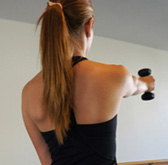 Arm walks calls for students to draw their shoulder blades inward and downward, and hold them there while they flex their shoulder joints to 90 degree angles. 90 degrees is not the greatest flexion the human arm can achieve, so arm walks isn’t technically an active stretching exercise. All the same, students must keep their rhomboids (the muscles between their shoulders blades) contracted and their shoulder blades in place as they move their arms forward and upwards, training them to stay square during sports and everyday activities. To perform arm walks:
Arm walks calls for students to draw their shoulder blades inward and downward, and hold them there while they flex their shoulder joints to 90 degree angles. 90 degrees is not the greatest flexion the human arm can achieve, so arm walks isn’t technically an active stretching exercise. All the same, students must keep their rhomboids (the muscles between their shoulders blades) contracted and their shoulder blades in place as they move their arms forward and upwards, training them to stay square during sports and everyday activities. To perform arm walks:
- Pick up a set of free weights. Two or three pounds works best for most students. Be aware that arm walks are different from weight lifting you’d do in a gym, so trust me that the lighter weights will soon feel heavy!
- Stand with good posture with one weight in each hand.
- Open your feet to hip width apart, and slightly bend your knees.
- Relax your lower back, grip your glutes, and bend slightly forward at your waist to engage your abs and upright your spine.
- Turn your weights so that they’re parallel to each other and place them lightly on the fronts of your thighs.
- Straighten your arms.
- Draw your shoulder blades inward and downward, and hold them firmly in place. It’s important that you keep your attention on these muscles throughout the exercise.
- Raise one weight up in front of you to shoulder height.
- Lower it smoothly back down to where it began as you raise your other weight up to shoulder height. Keep both arms moving the whole time.
- Perform these alternating lifts at a pace that is on the slow side, not following a music beat and moving both arms continually.
- Do about 30 walks. Release and roll your shoulders a few times.
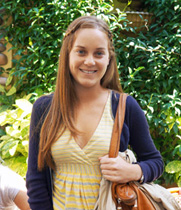
This effort pays off not only in more toned arms but better shoulder alignment and improved posture. Hanna, who’s been taking the Bar Method for two years, says that as a result of doing arm walks, “I’ve definitely been able to keep myself more upright and lifted in everything I do.”
If you do these exercises regularly, you’ll notice that the active stretches give you an echelon of results beyond what you’d get from intensely working out without them: longer more sculpted muscles, a realigned body, and soreness in the right places the next day 🙂

